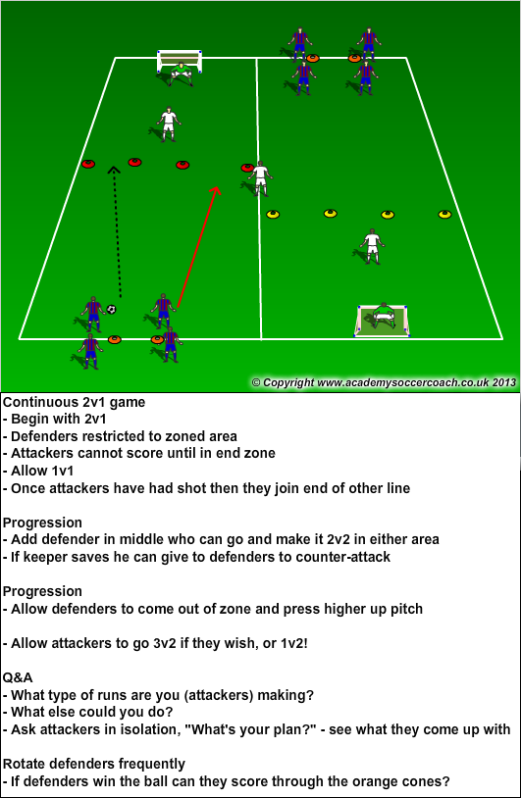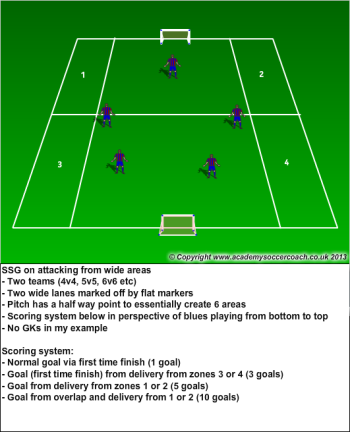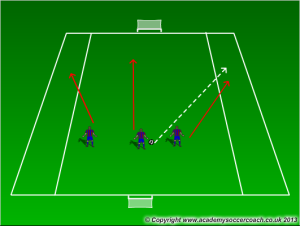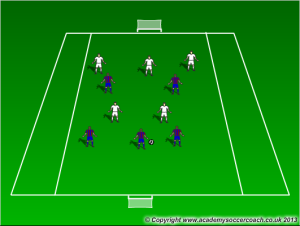Counter Attacking in the Modern Game
May 15, 2015 1 Comment
This week I attend a county FA CPD event on Counter Attacking in the Modern Game. The event, as is typical for these local CPD events, lasted for around 2.5 hours and was a mixture of classroom based discussion and a session demonstration outside.
The event was aimed at Level 2/3.
There was some good early discussion on Counter Attacking with the FA Coach talking about how the game is now about quick transitions whether that’s to get in to defensive shape or to attack quickly. The game is played at such a pace now that players must be able to react to changes in the game and make good decisions at the same time.
We spoke about tactical/technical requirements of Counter Attacking – words such as Speed, Pace, Vision, Decision Making came up as you might expect. We also spoke about the difference between ‘a counter attack’, i.e. identifying an opportunity in a game to attack quickly when the opposition are out of balance, and setting up as a counter attacking side which would require a side to sit deep and look for their opportunity to attack.
If you like to press you’re unlikely to consider yourself a counter attacking side but this depends on your definition of counter attacking. Does it have to come from deeper areas? Can it be triggered from anywhere on the pitch? If you win the ball high up the pitch and score within 2-3 touches/passes, is that a counter attack? All good conversation & discussion.
We also touched on the importance of having cover whilst counter attacking. What if the counter attack breaks down, are you at risk of being counter attacked? How do you mitigate this risk? Player intelligence comes in to this, you need players to get forward quickly & at pace but also players who can recognise the need to cover.
The Counter Attacking Session
Additional notes on the session:
- During the initial part of the session the reds are asked to defend deep so as to provide opportunities for counter attacking (rather than lots of instances of winning the ball from a high press)
- The coach always wanted the red team to be organised before the whites GK started in the first part of the session
- There are opportunities to work on strikers playing on the shoulder. Counter Attacks do not have to be pretty, a direct ball over the top if there’s space in behind can be an option
- Communication is important (when isn’t it)
The session outline is useful and it does provide LOTs of opportunities for transition and counter attacking. As the CPD was Level 2/3 I would have liked to have been given more technical & tactical content but really we were given a session template to work with.
Anyway, if you’re in need of a Counter Attacking session then give this a try – feel free to ask me any questions about it or share how you adapted it, that would be great to hear. Likewise, if you’re not covering Counter Attacking as a topic then maybe this gives you a nudge to think about it alongside the many other topics you’re coaching.






 Football Coaching News 24/7
Football Coaching News 24/7